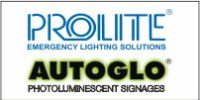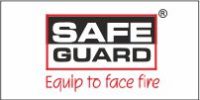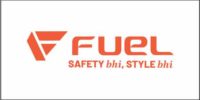 Working with electrical systems, especially panels and energized circuits, is a high-risk task that demands strict adherence to safety protocols. The dangers are very real—electrical shock, severe burns, arc flashes, and fatalities can happen in seconds if proper safety measures are not taken. These are not isolated risks; every industrial and commercial environment with electrical infrastructure must prioritize these hazards.
Working with electrical systems, especially panels and energized circuits, is a high-risk task that demands strict adherence to safety protocols. The dangers are very real—electrical shock, severe burns, arc flashes, and fatalities can happen in seconds if proper safety measures are not taken. These are not isolated risks; every industrial and commercial environment with electrical infrastructure must prioritize these hazards.
Let’s break down the core risks and the critical steps required to ensure the safety of workers and minimize life-threatening accidents.
Understanding the Risks of Electrical Shock and Arc Flash
Electrical Shock: Even brief contact with an energized part can result in serious injury or death. Electrical shocks happen when current passes through the human body, and it can cause burns, nerve damage, or cardiac arrest depending on the voltage and duration of contact.
Arc Flash: This is an even more dangerous event. An arc flash occurs when electrical current leaps across an air gap between conductors, causing an explosion of intense heat and light. Temperatures can reach over 35,000°F (19,427°C), hotter than the surface of the sun, and can cause life-threatening burns, vision damage, or death. These incidents are usually the result of equipment failure, unsafe work practices, or poor maintenance.
Essential Safety Practices
To mitigate the risks of electrical shock and arc flash, safety cannot be compromised. Implementing stringent safety protocols, using proper equipment, and training employees are essential steps to avoid disaster.
- De-energize Before Working
The safest approach is to always work on de-energized circuits. This means isolating the electrical source entirely to prevent any current from flowing. Workers should never assume that a circuit is de-energized—testing with appropriate tools should always confirm this.
- Test Before You Touch: Use calibrated voltage meters to verify de-energization. Never trust labels or prior assumptions—each situation is different, and verification is the key to safety.
- Use the Right Personal Protective Equipment (PPE)
PPE acts as the last line of defense against electrical hazards, and the right selection of equipment can be life-saving. For electrical work, PPE includes insulated gloves, flame-resistant clothing, face shields, safety glasses, and arc-rated equipment.
- Arc-Rated Clothing: This is crucial for protection from arc flash hazards. Regular clothing may ignite and cause severe burns in an arc flash, so wearing flame-resistant and arc-rated gear is non-negotiable.
- Insulated Tools: Hand tools and equipment must be insulated to prevent accidental electrical contact, providing an additional layer of protection during work.
- Follow Lockout/Tagout (LOTO) Procedures
LOTO ensures that energy sources, including electrical circuits, remain locked in an “off” state during maintenance or servicing. This prevents accidental energization, which could result in devastating consequences.
- Secure the Energy Source: Use a lockout device and attach a tag that clearly indicates the equipment is being worked on. The lockout should only be removed by the person who applied it to prevent accidental re-energization.
- Accountability: LOTO also ensures accountability, as every worker involved must apply their own lock, ensuring that no machine is turned on without each person’s knowledge and approval.
- Regular Training and Refresher Courses
Understanding and recognizing electrical hazards is essential for anyone working in proximity to energized equipment. Employees must receive regular training to stay up-to-date on best practices, hazard recognition, and emergency response procedures.
- Know the Hazards: Understanding the specific risks associated with electrical equipment—such as high voltage exposure, capacitors, and conductive surfaces—allows workers to approach their tasks with the appropriate caution and respect for the hazards.
- Respect the Dangers: Many accidents occur due to complacency. Continuous education, combined with safety drills and refreshers, fosters a safety-first mentality that can prevent devastating incidents.
Creating a Safety-First Mindset
Every day, electrical professionals across industries put their safety on the line to maintain, install, and repair the systems that power our world. It’s crucial that safety becomes ingrained in every action and decision taken on-site. Safety isn’t just a checklist item—it’s a mindset that must be integrated into all aspects of electrical work.
Commitment from Management
For safety protocols to be effective, management must lead by example, investing in the necessary resources, equipment, and training to empower employees. Enforcing safety standards and ensuring compliance at every level is essential for creating a culture where safety is a core value, not an afterthought.
Continuous Improvement
 Safety procedures and equipment need to be continuously evaluated for effectiveness. Regular safety audits, incident investigations, and updates to training programs will ensure that workers are always equipped with the most up-to-date knowledge and tools.
Safety procedures and equipment need to be continuously evaluated for effectiveness. Regular safety audits, incident investigations, and updates to training programs will ensure that workers are always equipped with the most up-to-date knowledge and tools.
Electrical shock and arc flash hazards are among the most dangerous risks workers face in industrial environments. However, these risks can be managed, and accidents can be prevented through proper training, equipment use, and adherence to safety protocols. By fostering a safety-first mindset and taking the necessary precautions, we can ensure that every worker goes home safely at the end of the day.
Let’s commit to safety—because in the world of electrical work, it’s not just essential; it’s a matter of life and death.























































